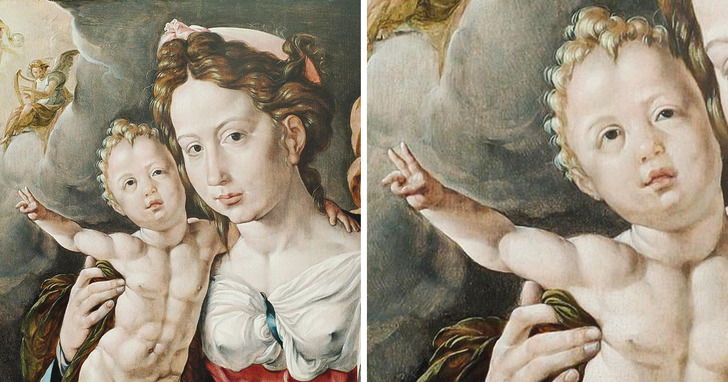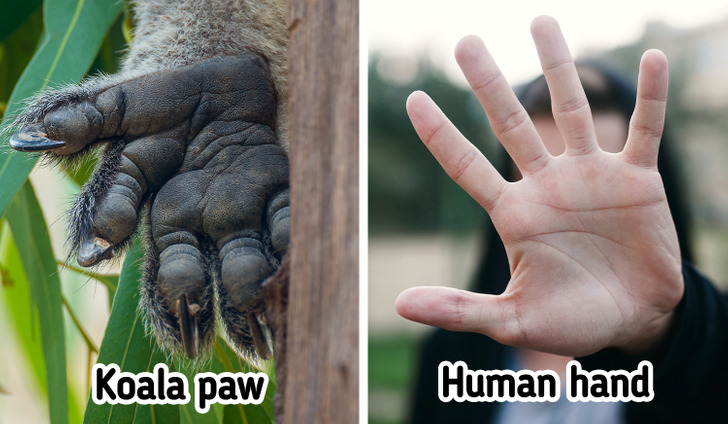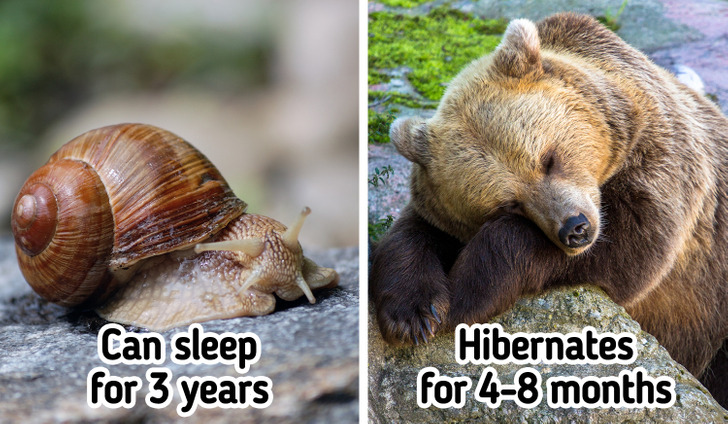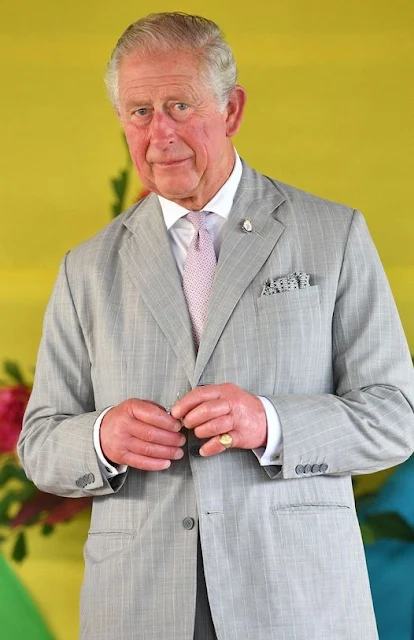The world is a big, wonderful place full of facts we never thought possible. For instance, if a pregnant mouse has a sudden medical issue, the fetus will send stem cells to heal the mother, increasing its chances of survival as well. Fetal stem cells have been found in human mothers as well, dubbed by science as microchimerism.
Bright Side dug up some more marvelous facts about nature and its creations, upholding our yearly resolutions to spread knowledge and joy.
1. The heart slows when your face touches water.

As mammals, we can’t breathe underwater, so as part of the mammalian dive reflex, our heart rate goes down in the water — more so if we go underwater. Even splashing the face with water makes the heart slow down, making it a great way to calm down.
2. Fungus can break down plastic in weeks.

It is said that in the future, there may be more plastic in the ocean than fish. This is why the plastic-eating fungus is great news, and there are around 50 new species of such fungi discovered already. One of the fungi discovered can digest plastic within 2 months, so there’s hope for us yet.
3. Newborn babies can support their own weight.

Newborn babies are strong — strong enough to be able to grasp things in their tiny fists and even support their weight as shown by an experiment done in the nineteenth century. Louis Robinson witnessed babies able to hang from a walking stick, from 10 seconds to 2 minutes and 35 seconds.
4. Koala fingerprints have been mistaken for human ones.

We’ve been told that our fingerprints are unique, and they are. But the fact remains that even though we share a common ancestor with the koala that was alive 100 million years ago, koala fingerprints look very similar to human fingerprints, as do chimpanzee fingerprints for that matter.
5. Snails can sleep for 3 years.

If you thought bears had it good with hibernation, meet the snail. Snails can sleep rather than hibernate for 3 years at a time without needing food. Of course, this is with some snail species, not all of them. Meanwhile, bears usually hibernate for just 4-8 months.
6. Sloths need 2 weeks to digest food.

Sloths don’t only move in slow motion — even their insides move slowly, ostensibly to preserve energy, which is why a sloth’s digestive system takes 2 weeks to process the food it ate. Plus, most of what it eats is indigestible, giving it very little energy from each slowly chewed mouthful.
On the other end of the spectrum lies the shrew, whose digestion takes mere minutes and is done so fast, not much of it is fully digested. This is the reason why shrews eat their own feces. They can die of starvation in a matter of hours if they don’t eat.
7. Your brain ignores seeing your nose.

We can see our nose all the time, it’s just that the brain tends to ignore it because it’s a constant visual stimulus. It’s the same with people who wear glasses. After a while, they simply stop noticing them.
8. Your forearm is the same length as your foot.

If you don’t have the time to try on a shoe, measure it from your elbow crease to your wrist. If it fits or is just a little smaller, it would fit your foot because the length of your forearm is the same as your foot. And this is just one of many human body ratios that are a marvel in themselves, including the fact that your femur bone is one-quarter your height.
9. You can “see” your white blood cells.

If you look up at a cloudless, bright blue sky and see some wiggly things at the periphery of your vision, you’ve just experienced the blue field entoptic phenomenon. The wiggly things are white blood cells moving in the fine blood vessels moving in front of the retina, at the back of the eye.
10. Human beings have striped skin, but only cats can see it.

Human beings have stripes and patterns on the skin too, and they are called Lines of Blaschko, name eponymously by the scientist who discovered them, Dr. Alfred Blaschko. These are closer to tiger stripes, forming more of a V-pattern fanning out from the center to the extremities. These lines are visible under UV light, a spectrum that cats can see too, which is why cats can see you as a striped being as well.
Which of these facts turned out to be a revelation for you? Share your extreme nature facts with us and blow us away.
Preview photo credit Shutterstock.com, Shutterstock.com
Secrets Beneath the Crown: The Mysterious Funeral Plans of King Charles
Within the majestic and secretive walls of Buckingham Palace, whispers of a concerning reality grow louder. Despite a public display of resilience, King Charles, now 75, is reportedly in poorer health than his recent appearances suggest. Behind the carefully curated royal image lies a hidden truth that has prompted the implementation of a covert operation: the secret funeral plans for the current monarch, code-named Operation Menai Bridge.
Outwardly, King Charles appears to have recovered from the health scare that recently shook the monarchy. His public engagements, though less frequent, have been carried out with the dignified composure expected of a king. However, those closest to him reveal a different, far more troubling story. Once mere speculation, whispers of his battle with cancer are now discussed among the inner circle with a tone of reluctant acceptance. It appears the king’s struggle is more severe than the public has been led to believe.
As the king’s health remains cloaked in secrecy, the palace’s attention has turned to preparing for what could be an unprecedented event in modern British history. Operation Menai Bridge, the codename for King Charles’ funeral plans, has been meticulously designed to honor his personal wishes—a monarch known for his profound respect for tradition and desire to leave a distinct legacy.
The details of this operation are closely guarded, with only a select few privy to its intricacies. These preparations go far beyond mere logistics; they represent a complex choreography of diplomacy, ceremonial protocol, and personal elements that King Charles has insisted upon. Every aspect, from the guest list to the floral arrangements, is being carefully curated to ensure it reflects the king’s vision for his final farewell.

As Prince William, the heir to the throne, takes on more public responsibilities, the palace is carefully managing the transition of power, striving to convey a sense of continuity and stability. For those who know King Charles well, his son’s increasing prominence is a poignant reminder of the inevitable future facing the monarchy.
Friends of the king, who were once optimistic about his recovery, are now coming to terms with a difficult reality. Their previous bravado has shifted to quiet resignation as they face the possibility that the king’s time may be drawing to a close. This concern extends beyond palace insiders to a nation that has watched King Charles navigate the challenges of his role with grace, determination, and a profound sense of duty.
Operation Menai Bridge is more than a funeral plan; it is a reflection of a monarch who has dedicated his life to preparing for the crown. Every detail—from the music to the readings—has been chosen to convey the essence of King Charles: a man deeply rooted in history yet willing to forge his own path. The operation stands as a testament to his belief in the monarchy’s enduring power, even as it adapts to the challenges of the 21st century.
The palace remains characteristically silent about the specifics of the king’s condition, maintaining a veil of discretion that has long been its hallmark. Yet, the signs are there for those who look closely: the growing public role of Prince William, the hushed conversations among royal insiders, and the careful planning of Operation Menai Bridge all point to an uncertain but unavoidable future.
As the world watches, King Charles’ health remains a topic of speculation, concern, and hope. For now, he continues to fulfill his royal duties, his public persona unwavering. But behind the scenes lies a different reality—one of a monarch approaching the twilight of his reign, and a kingdom quietly bracing for the dawn of a new era.
Ultimately, Operation Menai Bridge is not just a plan for a funeral; it symbolizes the delicate balance between tradition and change that has always defined the British monarchy. As curiosity about King Charles’ health and the secret preparations for his final farewell intensifies, a long shadow is cast over the future of the crown.



Leave a Reply